While staying in the Pevek meteorology station, I got to thinking... which is a dangerous thing for a science teacher... How can a weather junkie like me not find out about the meteorology station just three stories down stairs? While I am at home, I am a CocoRaHS observer (NC-GL-13 Browns Summit 3.2NW). While I am here in Russia, I miss not getting up every morning to make my precipitation measurements! (For those of you who do not know about CocoRaHS, it is a program across the US that coordinates citizen weather observations with the US National Weather Service. Visit us on the web and join the ranks of observers!)
I spoke with Rita, our translator, this morning and I got permission to join one of the meteorologists when they went out to make afternoon measurements. Rita then accompanied me so I could ask questions. Like many of the stations in the US, most of the measurements are made with automated electronic equipment, although analog measurements are also recorded.
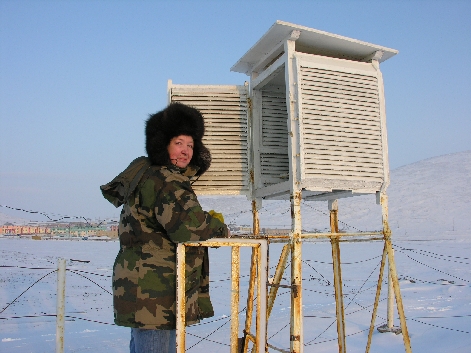 Valentina Romanova recording weather measurements at the Pevek meteorology station.
Valentina Romanova recording weather measurements at the Pevek meteorology station.
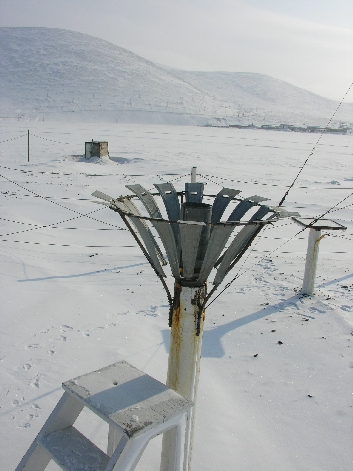 Precipitation gauge in Pevek. (It is not CocoRaHS, but almost!)
Precipitation gauge in Pevek. (It is not CocoRaHS, but almost!)
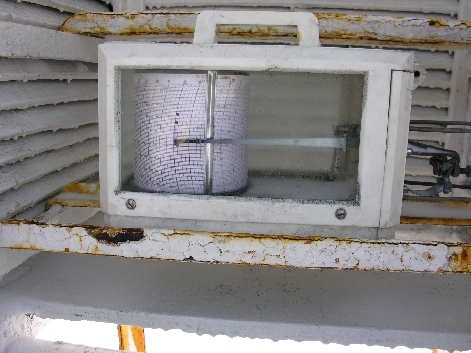 Thermograph at the Pevek met station.
Thermograph at the Pevek met station.
In addition to measuring basic weather conditions, precise sea level measurements are also recorded. We walked down to a small icehouse on the bay where the measurements are made. In the icehouse is an open hole to the water. Valentina Romanova described that the sea level rises and falls depending on the wind. When wind is blowing towards the shore, the water in the bay may rise as much as 10 or 20 cm compared to when the wind is blowing out to sea.
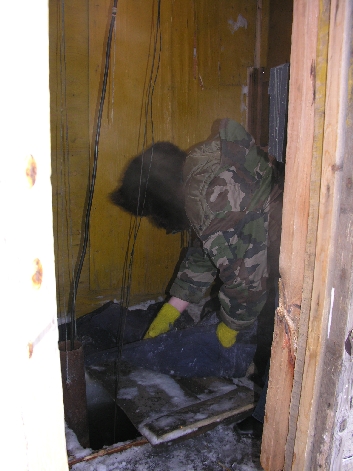 Ice house on Pevek bay for precise sea-level measurements
Ice house on Pevek bay for precise sea-level measurements
To keep the hole in the ice open, slush must be scooped from the hole on a daily basis. Valentina told us that frequently a friendly seal uses this measurement spot as a breathing hole. Unfortunately, the seal was not using the hole while measurements were made this afternoon. After the measurements were made, Valentina Romanova hurried inside to transmit the measurements in coded form to the Russian weather service in Moscow where they would then be posted to the rest of the world. Here is an example of today's coded METAR data. METAR UHMP 300400Z 12002MPS 9999 BKN150 M20/M22 Q1014 NOSIG RMK QFE761
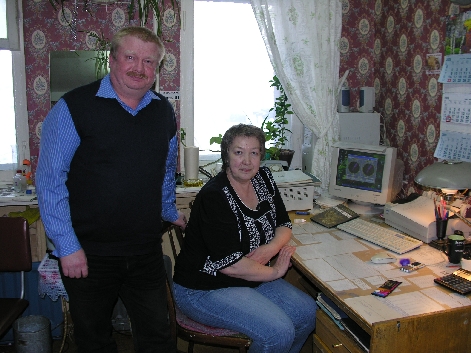 Valentina Romanova and Demitry Kozelov (Director of the Pevek Roshydromet Station) in the Pevek meteorology station
Valentina Romanova and Demitry Kozelov (Director of the Pevek Roshydromet Station) in the Pevek meteorology station
So for all of my students... when we have gone on-line to check the weather in Pevek, now we know who are the faces behind the numbers... to see the latest weather, go to www.wunderground.com and search for the city: Pevek, Russia. While thinking of weather and temperature, after dinner our team stopped by the climate controlled shipping container that will carry the sediment cores from Pevek to St. Petersburg and then on to Bremerhaven, Germany.
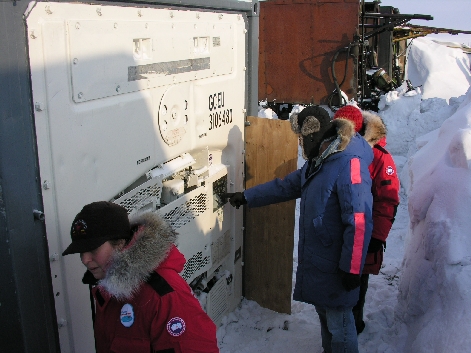 Volker and Kristina checking the temperature of the climate controlled shipping container for the cores
Volker and Kristina checking the temperature of the climate controlled shipping container for the cores
While some of the team checked the specifications of the shipping container, Jochem made friends with one of the wolf like dogs that belong to the Pevek drilling contractor.
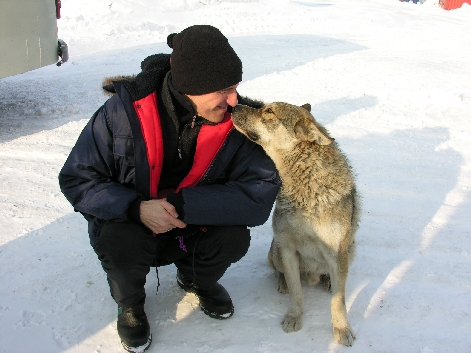 Jochem found a friend
Jochem found a friend
T-Mart...staying warm in Pevek.

